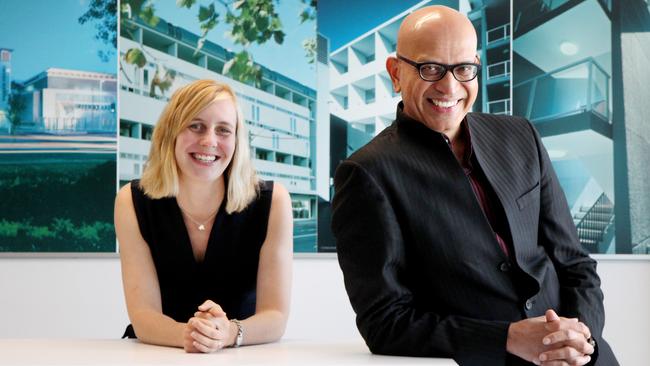Keep staff abreast of changes
Implementing new technology can be much smoother if everyone is aboard.

Adapting to changing technologies and business models — ultimately leading to a productivity boost — is an ongoing challenge for many companies but accountant Adam Griffiths says advisers can make it easier.
Griffiths, who runs an accounting and financial planning firm, says technology and the need for accountancy services have changed over the past decade, forcing him to adapt and wanting to help others.
“I remember eight to 10 years ago in our profession talking about smartphones; up until that point things were happening slowly,” Griffiths says.
“Then all of a sudden everyone had smartphones, we were mobile and IT professionals in our own mind. That’s been the key to it all, it’s so accessible to everyone.”
Griffiths has enabled change in his organisation and taken staff with him, embracing cloud software to make their job easier and let people be more productive. He says the key is explaining to staff when changes are being made and helping them transition. “If you’re afraid, seek advice from professionals, whether it is accountancy or IT professionals,” he says.
Griffiths’ staff are tech-savvy, and he says that has helped them expand their roles.
With more people doing their tax returns online and fewer seeing accountants for the basics, he says their role is changing from being maths professionals to being financial advisers.
“There’s definitely been a lot of talk about machines taking over our roles but I don’t see it as an issue,” he says. “As a firm we’re looking forward to the opportunity where we don’t have to do a lot of the mundane tasks.
“A lot of the junior staff can instead be trained with the advice side of the business. There’s a lot more focus now on the junior accountants learning how to communicate with clients; that’s a really important skill.”
In the past many would graduate with technical skills, he says, but would be petrified of speaking to clients.
Managing change can be frightening, Griffiths says, whether it be learning new skills, adapting to technology or changing career tack in advancing years.
“In any organisation there’s people that are keen to adopt technology and there are people that want to keep going the same way — and that’s the real challenge, to change their mindset.”
Architecture firm DesignInc has taken a different approach to adapting to technological change, and when the company decided to revamp its internal systems it made sure all staff were on board.
Human resources manager Tara Keast says that during a feedback forum staff had identified that their IT systems were not working well, and when the company was ready to implement a new integrated software program, she knew all employees needed to support the concept to ensure it would work.
“We let everyone know how the process was going, we had the company come in and present to us and get the staff excited,” Keast says. “We had a competition and that was the first key to engagement — to bring people in on what we were going to call the system, and to design a logo and interface.
“We’re architects, so everyone was design savvy.”
The Sydney DesignInc office has about 60 employees.
Close to half entered the competition and they ended up calling the new system Fox, representing agile, smart creatures.
Once the back end of the technology was ready to go, the next step was engaging staff in training. They appointed Fox champions across all levels in the business, and trained them to help other staff members. When they were ready to go live, the company held a Fox morning tea to excite and motivate staff.
“At no stage did I feel animosity towards it. People were happy to embrace something new that was an improvement,” she says. “It was challenging and six months in I still get questions about the system every day that I don’t know the answers to, but we’ve had 100 per cent buy-in.”
Keast says that when making changes in an organisation it is crucial to engage staff in the process, keep them informed how things are progressing, provide training and follow it up with ongoing support.
BespokeHR consultant and change management specialist Paulette Kolarz says it is important to get staff on board when managing change, no matter how small or large the organisation is.
“A demotivated, disengaged employee who is not on board with any change has the same negative impact on business irrespective of size,” Kolarz says.
She says companies tend to overlook minor changes in the larger scheme of things — such as desk or office moves, changes to salaries or benefits including phone bill remuneration and car policies — and those small elements may upset staff more than people think.
Kolarz says poorly managed change can result in disengagement, demotivation, anger, denial, uncertainty, lack of productivity or down time, loss of confidence and sabotage of those new changes. It can also be difficult to manage motivation during the change process, particularly for longer projects, and dealing with changes to projects during extended rollouts.
Problems can also arise when managers fail to properly think through or proactively manage the end result or the impact on the team if roles are to change or jobs are lost.
“Communication is the key to success, (to successful) change implementation,” she says.
“When looking to introduce a new change, make sure you communicate the what, why, how, when, where and who.”
Kolarz says those involved in implementing new programs need to clearly define what the project is and whom it affects, ensure management teams are on board, explain why it is important, what the benefits are, whether it is important enough for people to make those changes, and what the end point looks like.


